The Mahakaleshwar Temple in Ujjain is not just a place of worship but a living testament to the rich history, profound mythology, and captivating legends associated with it. This temple, dedicated to Lord Shiva, has stood the test of time and continues to be a source of spiritual inspiration for millions of devotees worldwide. In this comprehensive exploration, we will delve into the temple’s history, mythology, and the fascinating legends that surround it.
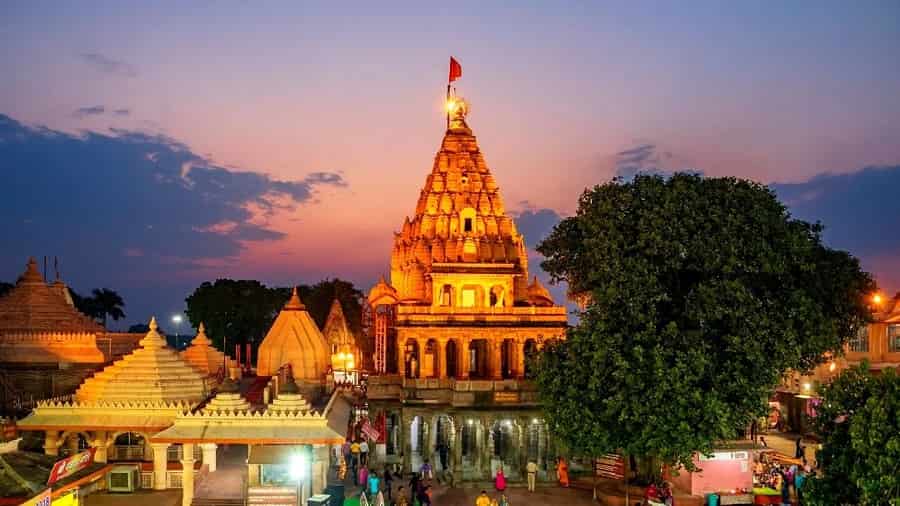
History of Mahakaleshwar Temple
The history of Mahakaleshwar Temple is intertwined with the tapestry of Indian civilization, stretching back over two millennia. The temple has undergone numerous transformations, renovations, and architectural changes over the centuries, reflecting the various dynasties that ruled the region. Here is a chronological overview of its historical journey:
Ancient Origins (4th Century BC – 3rd Century AD): The earliest references to the Mahakaleshwar Temple can be traced back to ancient Sanskrit texts, including the Matsya Purana and the Avanti Khanda. These texts date its existence to as early as the 4th century BC. The temple was a revered site even during the Mauryan and Shunga dynasties.
Gupta and Post-Gupta Period (4th – 6th Century AD): The Gupta Empire, known for its flourishing art and culture, contributed to the temple’s architectural development during this period. The temple complex began to take on the form of a grand structure, showcasing intricate carvings and architectural details.
Medieval Period (11th – 18th Century AD): The Paramara dynasty, who ruled over Malwa in the 11th century, played a pivotal role in the temple’s growth and significance. The temple saw extensive reconstruction and renovation during their reign. However, it faced the brunt of foreign invasions, particularly during the rule of the Delhi Sultanate and the Mughal Empire. Despite these challenges, the temple retained its sanctity and continued to be a place of worship.
Mughal Era (17th – 18th Century AD): The Mughal rulers, notably Emperor Aurangzeb, posed a significant threat to the temple. There are historical accounts of the temple being desecrated and partially destroyed during his reign.
British Rule and Post-Independence (19th Century Onward): After the decline of the Mughal Empire, the temple’s restoration efforts began during the British colonial period. The archaeological survey of India played a crucial role in preserving and renovating the temple. In the post-independence era, it has been carefully maintained and remains a focal point of religious and cultural significance.
Mythology and Legends
The Mahakaleshwar Temple is not only steeped in history but also enshrouded in captivating mythology and legends that add to its aura of sanctity and reverence. Here are some of the prominent myths and legends associated with the temple:
The Origin of Mahakaleshwar Lingam: According to Hindu mythology, Lord Shiva manifested himself in the form of a unique lingam (phallic symbol) at this very spot in Ujjain. The lingam is believed to be self-manifested, known as a “Swayambhu Lingam,” and is revered as Mahakaleshwar, the Lord of Time.
The Legend of King Chandrasen and Shrikhand: One of the most popular legends associated with the temple revolves around King Chandrasen and his encounter with a young boy named Shrikhand. Shrikhand was a devout follower of Lord Shiva and was often found lost in meditation. The king, curious about Shrikhand’s devotion, followed him one day and found him offering water to a Shivalinga concealed beneath the earth. This miraculous event led to the discovery of the Mahakaleshwar Lingam and the subsequent construction of the temple.
The Legend of Raja Vikramaditya: Another intriguing legend speaks of Raja Vikramaditya, a renowned king of Ujjain, who had a close association with the temple. It is said that Lord Shiva himself appeared before the king and granted him a boon, vowing to protect the city of Ujjain.
The Tale of Kalbhairava: The Mahakaleshwar Temple is not just dedicated to Lord Shiva but also houses a shrine for Kalbhairava, one of Shiva’s fierce manifestations. According to legend, Kalbhairava is considered the guardian of Ujjain, and devotees believe that visiting his shrine grants them protection and blessings.
The Eternal Flame: Inside the temple, there is a continuously burning sacred fire, known as the “dhuni.” It is believed to have been burning for centuries and holds immense significance. Devotees consider the ash (bhasma) from this dhuni to be highly sacred and use it in various rituals.
The Myth of Bhasm Aarti: The Bhasm Aarti, a daily ritual at the temple, has its own mythological significance. It is believed that Lord Shiva himself performs the Aarti for his devotees during the early hours of the morning, making it a sacred and spiritually enriching experience.
These myths and legends not only add depth to the spiritual significance of the temple but also serve as a source of inspiration and devotion for the countless pilgrims who visit Mahakaleshwar Temple seeking the blessings of Lord Shiva.
References in Hindu scriptures
The Mahakaleshwar Temple in Ujjain holds a significant place in Hinduism, and it is referenced in several Hindu scriptures. Here are some of the notable references to Mahakaleshwar in these scriptures:
Matsya Purana: The Matsya Purana, one of the oldest Puranas in Hinduism, contains references to the Mahakaleshwar Temple in Ujjain. It describes the temple’s significance and sanctity, emphasizing Lord Shiva’s presence in the form of Mahakaleshwar.
Avanti Khanda: The Avanti Khanda, a section of the Skanda Purana, provides detailed accounts of the Mahakaleshwar Temple and its importance as a revered place of worship. It narrates the legends associated with the temple and the rituals performed there.
Shiva Purana: The Shiva Purana, one of the eighteen major Puranas, includes references to Mahakaleshwar and its significance as one of the twelve Jyotirlingas, which are considered the most sacred abodes of Lord Shiva.
Kalika Purana: The Kalika Purana, dedicated to the goddess Kali, also mentions the Mahakaleshwar Temple and its role in the religious landscape of Ujjain. It highlights the temple’s rituals and the spiritual importance attached to it.
Kashi Khanda: Although primarily focused on Kashi (Varanasi), the Kashi Khanda of the Skanda Purana mentions the Mahakaleshwar Temple in the context of Ujjain’s spiritual heritage and the significance of Lord Shiva’s presence there.
Mahabharata: While not a direct reference to the Mahakaleshwar Temple, the Mahabharata, an epic of ancient India, alludes to the importance of Ujjain as a pilgrimage center. This indirectly acknowledges the significance of temples like Mahakaleshwar within the city.
Architecture
Shikhara (Spire): The temple boasts an impressive shikhara, or spire, which is a hallmark of North Indian temple architecture. The shikhara is adorned with intricate carvings and sculptures, depicting various mythological stories and motifs. It rises prominently above the temple complex and is a distinctive feature of the temple’s exterior.
Mandapa (Hall): Like many Hindu temples, the Mahakaleshwar Temple has a mandapa, a spacious hall supported by ornate columns. This mandapa serves as a gathering space for devotees, a venue for religious ceremonies, and a place for offering prayers.
Garbhagriha (Sanctum Sanctorum): The innermost sanctum of the temple, the garbhagriha, houses the primary deity, Lord Shiva, in the form of a sacred lingam. This sanctum is the most sacred area of the temple and is accessible only to the temple priests. Devotees offer their prayers and offerings from outside the garbhagriha.
Interior
Lingam: The main deity of the Mahakaleshwar Temple is Lord Shiva, represented by a lingam, a cylindrical stone structure symbolizing his divine presence. The lingam is bathed with sacred substances like water, milk, and honey by priests and devotees as part of worship rituals.
Shrines: Within the temple complex, there are smaller shrines dedicated to various deities associated with Lord Shiva, as well as other Hindu gods and goddesses. These shrines offer devotees the opportunity to pay their respects to multiple divine beings.
Ornate Decorations: The temple’s interior is adorned with intricate artwork, including colorful paintings, sculptures, and carvings. These artistic elements often depict scenes from Hindu mythology and stories related to Lord Shiva, adding to the temple’s aesthetic appeal and spiritual significance.
Prayer Halls: Devotees can find prayer halls or pavilions within the temple where they can sit, meditate, and offer their prayers. These halls typically feature beautiful designs on the walls and ceilings, enhancing the spiritual atmosphere.
Offering Areas: Special areas within the temple are designated for devotees to make offerings such as flowers, coconuts, and sweets as part of their worship and religious rituals.
Aarti and Rituals: The temple conducts regular aarti ceremonies, which involve the waving of lamps in front of the deity. These rituals create a spiritually charged atmosphere within the temple and provide a unique religious experience for visitors.
Conclusion:
The Mahakaleshwar Temple in Ujjain is a timeless testament to the convergence of history, mythology, and legends. Its origins trace back to ancient times, and its significance has only grown over the centuries. As devotees continue to flock to this sacred site, they are not just witnesses to history but participants in a living tradition that spans millennia, celebrating the divine presence of Mahakaleshwar, the Lord of Time.


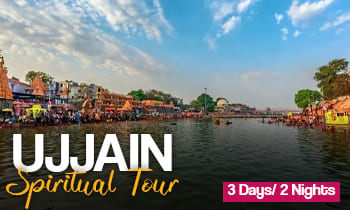
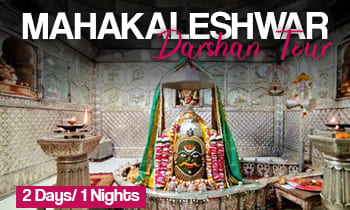
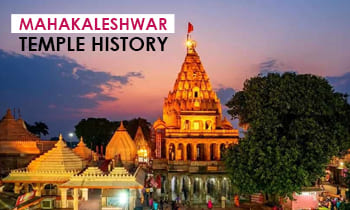
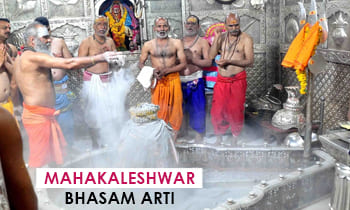
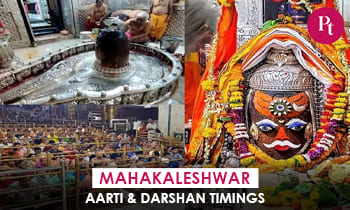
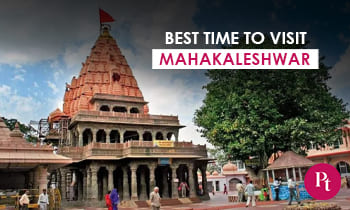
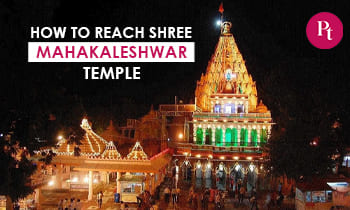
 Call
Call WhatsApp
WhatsApp Enquiry
Enquiry